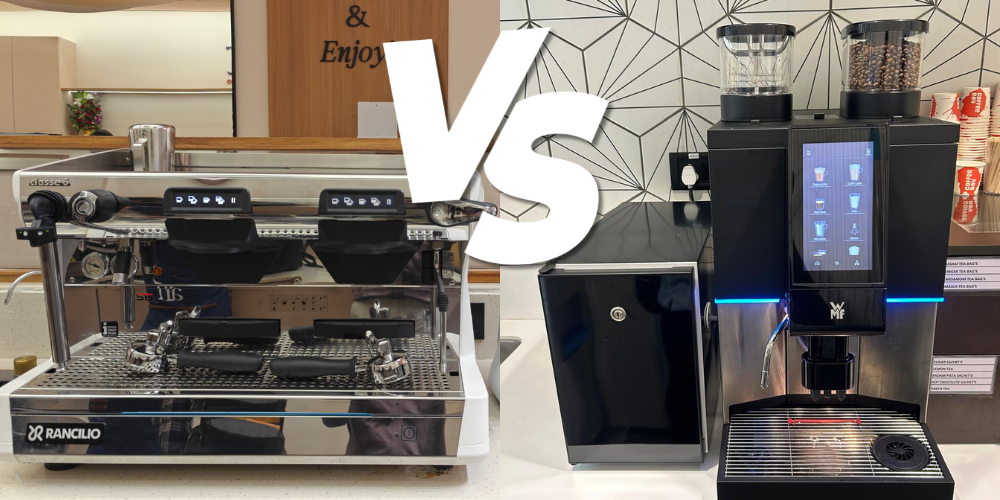When setting up or upgrading a workplace cafe, one of the most common questions facility managers and business owners face is which coffee machine for cafeteria use works best: automatic or semi-automatic? With growing demand for fresh, cafe-style coffee in offices, colleges, and institutions, choosing the right machine is not just about convenience; it’s about creating a better work culture, saving costs, and keeping everyone energized.
To help you make an informed decision, let’s dive into the differences between automatic and semi-automatic machines and look at which models might suit your cafeteria best.
Why the Right Coffee Machine Matters in a Cafeteria
A cafeteria is more than just a place to grab a snack; it’s often the social hub of the workplace. Employees gather over cups of coffee to exchange ideas, take breaks, and recharge before heading back to their desks. Offering high-quality coffee makes a noticeable difference in morale and productivity.
The right coffee machine for cafeteria use balances three essentials:
- Consistency: Every cup should taste the same, regardless of who makes it.
- Speed: In cafeterias, queues move quickly, and the machine must keep up.
- Ease of use: Staff or users should be able to prepare drinks without steep learning curves.
Now, let’s break down automatic and semi-automatic options.
What is a Semi-automatic Coffee Machine?
Semi-automatic coffee machines give users more control over the brewing process. They usually require manual involvement for grinding beans, tamping, and starting or stopping the extraction process. This means the skill of the operator influences the taste and quality of the coffee.
Key benefits of semi-automatic machines include:
- Craftsmanship: Users can fine-tune each shot to perfection.
- Durability: Many are built with robust, long-lasting materials.
- Better for smaller cafeterias: They work well where staff are trained or passionate about making great coffee.
For cafeterias that want to offer a premium café-like experience and don’t mind staff training, these machines are an excellent choice.
Example: Rancilio Silvia
The Rancilio Silvia is a popular semi-automatic machine that combines professional-grade components with a compact design. Perfect for smaller cafeterias, it allows users to brew authentic espresso while learning the art of coffee-making.
What is an Automatic Coffee Machine?
Automatic machines simplify the process by handling most of the work. Users only need to press a button, and the machine grinds, doses, tamps, and brews automatically. Some advanced models even include milk frothing features.
Advantages of automatic machines include:
- Efficiency: Ideal for high-traffic cafeterias where speed is crucial.
- Consistency: Every cup comes out the same, regardless of the user.
- Minimal training: Anyone can use it, which reduces errors.
These machines are particularly suited for large institutions, offices, or universities where hundreds of cups may be served daily.
Example: Rancilio Invicta
The Rancilio Invicta is designed with simplicity and reliability in mind. It’s an excellent choice for busy cafeterias that need to maintain quality while serving a high volume of drinks quickly.
Automatic vs. Semi-automatic: Which Fits Your Cafeteria?
Both automatic and semi-automatic machines have unique strengths. The best coffee machine for cafeteria use depends on several factors:
- Volume of Demand
- Large cafeterias with constant queues benefit more from automatic machines.
- Smaller or mid-sized spaces with moderate traffic can explore semi-automatic options.
- Staff Expertise
- If staff members have barista skills or training, semi-automatic machines elevate the coffee experience.
- If not, automatic machines ensure consistency with no fuss.
- Budget
- Semi-automatic models often have a lower upfront cost but may require more skilled operation.
- Automatic machines are more expensive initially, but save on training and time.
- Experience for Users
- Do you want quick, no-hassle coffee at the touch of a button? Go automatic.
- Do you prefer an authentic coffee-making process where quality can be fine-tuned? Semi-automatic is the way.
Example: Rancilio Classe 9 USB
For those who want a professional machine capable of handling large-scale demand, the Rancilio Classe 9 USB offers advanced automation with reliable performance. It’s perfect for cafeterias that need both speed and excellence.
Choosing the Best Option for Your Workplace
When deciding between automatic and semi-automatic options, it’s important to align the machine with your cafeteria’s goals. Consider these questions:
- How many cups of coffee are served daily?
- Do you have trained staff, or will anyone use the machine?
- Is the priority speed, or do you want to emphasize a high-quality, artisanal experience?
No matter your choice, investing in a reliable coffee machine for cafeteria ensures your team always has access to fresh, energizing coffee throughout the day.
Final Thoughts
Both automatic and semi-automatic coffee machines bring unique advantages to the table. For cafeterias that value speed and efficiency, semi-automatic models like the Rancilio Invicta or Classe 9 USB are great picks. For smaller setups that want a more authentic, hands-on approach, the Rancilio Silvia delivers beautifully crafted espresso.
Ultimately, the right coffee machine for cafeteria use will depend on your team size, budget, and the kind of coffee culture you want to promote. With Rancilio’s trusted range of machines, cafeterias can confidently serve premium coffee while keeping operations smooth and efficient.


